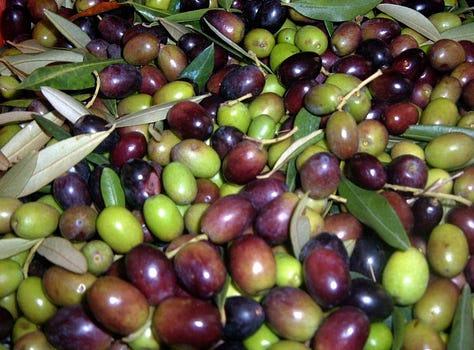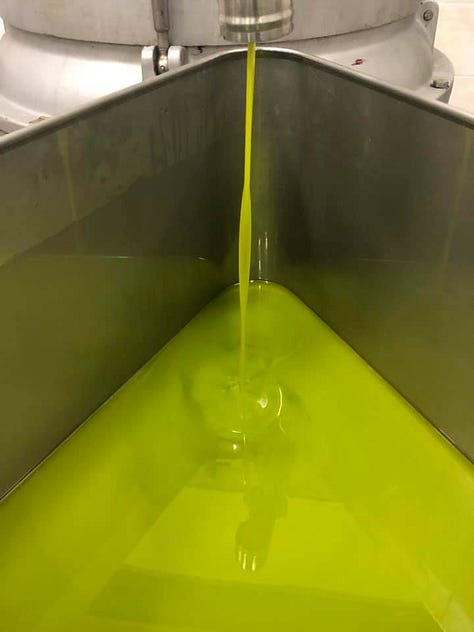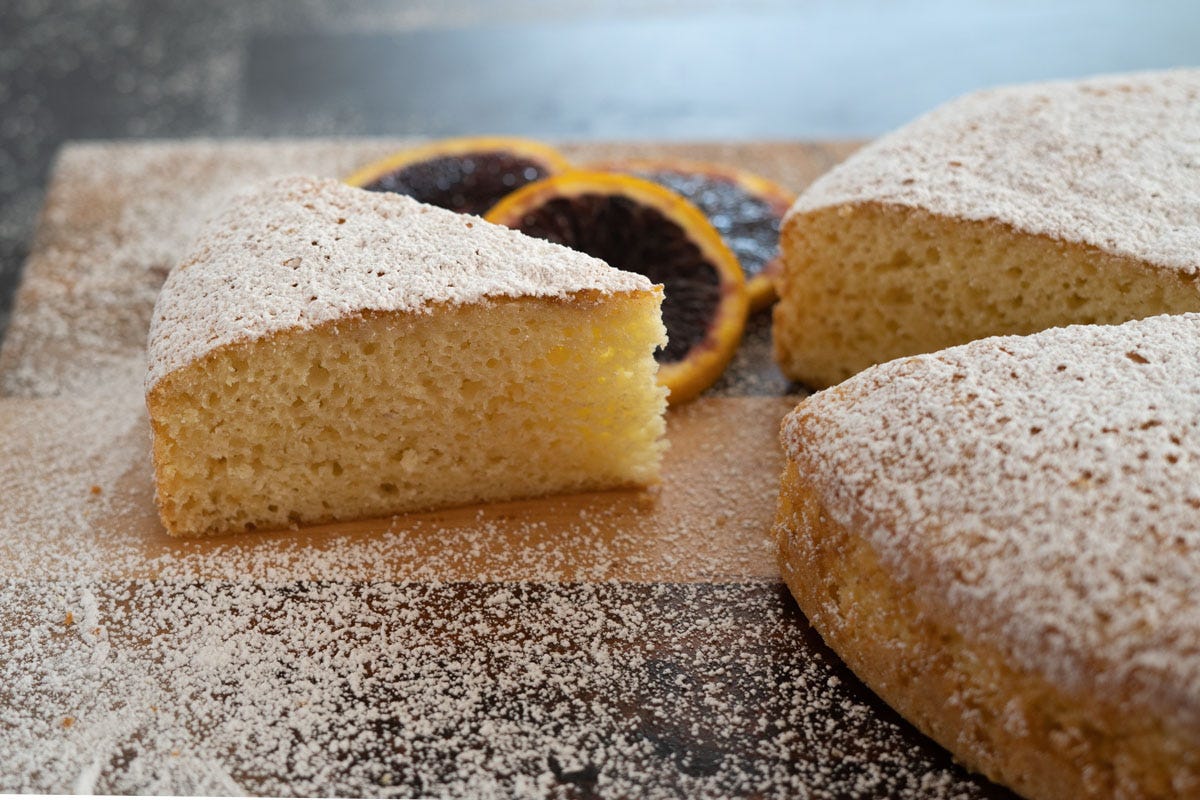It’s olive harvest season, and our Substack feed and social media have been full of pictures and stories of people harvesting their olives, bringing them to the frantoio to be pressed, and enjoying the singular fragrance and flavor of olio nuovo, or new oil.
Years ago, we did that, too.
The olive trees on Stefano’s family’s land near Olevano Romano, in the countryside east of Rome, were prolific producers of olives. On weekend mornings this time of year, we’d get our work clothes on, pack up the car, and head out for a day of work, spreading nets under the trees, raking the olives off the branches with little plastic hand rakes, and bagging the olives into big burlap sacks.
Olive plants are pruned differently across regions of Italy, and Stefano’s family never allowed their olive trees to grow very tall. Still, a few branches were out of reach, and Stefano’s dad, Andrea, insisted that he be the one to climb the ladder to reach those olives, which made no sense since he was the biggest and the heaviest of the group.
Once, standing on the ladder and stretching for a branch, Andrea lost his balance and fell into the tree. The limbs cushioned his fall, but one large branch broke off the decades-old tree. I think Stefano’s mom, Maria, was more concerned about the olive tree’s broken limb than whether her husband’s limbs were still intact!
Tired and with dirt caked under our fingernails, we brought the heavy sacks of olives to the frantoio. When it was our turn, we watched while the olives traveled along the conveyor belt of an impressive machine that cleaned them, eliminated all the twigs and leaves, then crushed and pressed them until finally, our oil emerged from the opposite end, green and pungent and delicious.



Most years, the olive harvest yielded enough oil for Andrea and Maria’s household, our household, and Stefano’s brother Marco’s household, with more left over for the friends and relatives who had helped with the olive harvest. We were fortunate that we never wanted for olive oil.
“Olive oil is good for you,” Andrea often proclaimed, never qualifying that with …in moderation.
I’ve rarely seen Stefano’s mom, Maria, cook with any oil other than olive oil. Her salads and vegetables glisten in it, her sauces simmer, and her meats stew in it. She sometimes fries in it. She even bakes with it. Her favorite is a simple, rustic olive oil cake that she calls pizza dolce, or sweet pizza.
It may have been Maria’s pizza dolce that Stefano missed the most when we moved to the U.S. There weren’t other breakfast options here that worked for him. Yes, olive oil cake is a breakfast food. It’s not only a breakfast food – it works very well with afternoon coffee and less commonly as evening dessert – but it’s special for breakfast. So, after a few weeks of trying out cereals, muffins, and other American breakfast items, we called Maria and asked her to give us the recipe for a pizza dolce.
There are hundreds of variations of pizza dolce, each recipe reflecting a regional variation of this simple, sweet cake. Maria’s version is uncomplicated and pure: flour, sugar, eggs, milk, olive oil, and something to help it rise. Stir it all together and pop it in the oven. Before you know it, the kitchen is filled with the sweet, earthy aroma of this golden-hued, humble cake.







